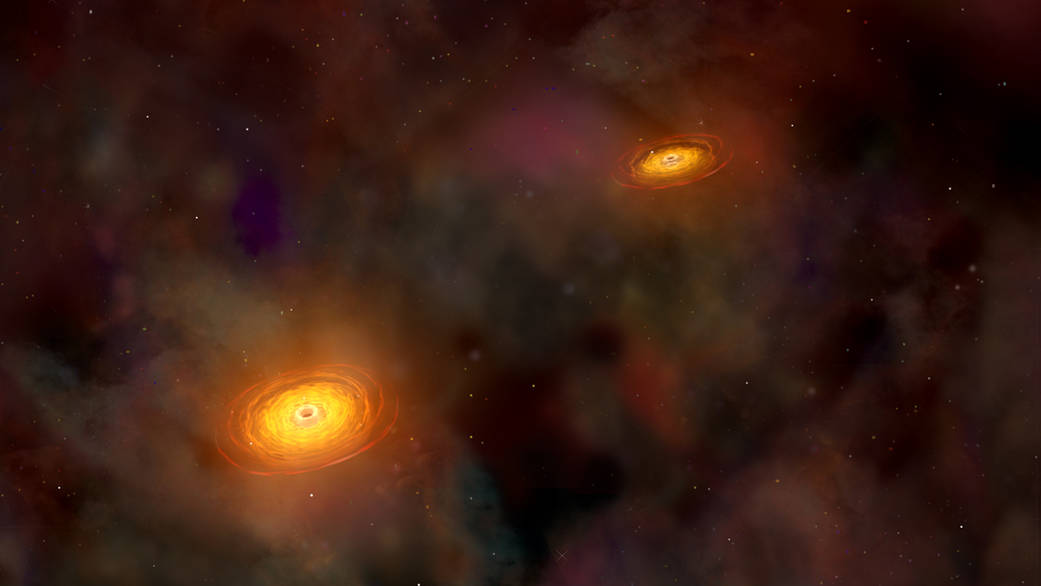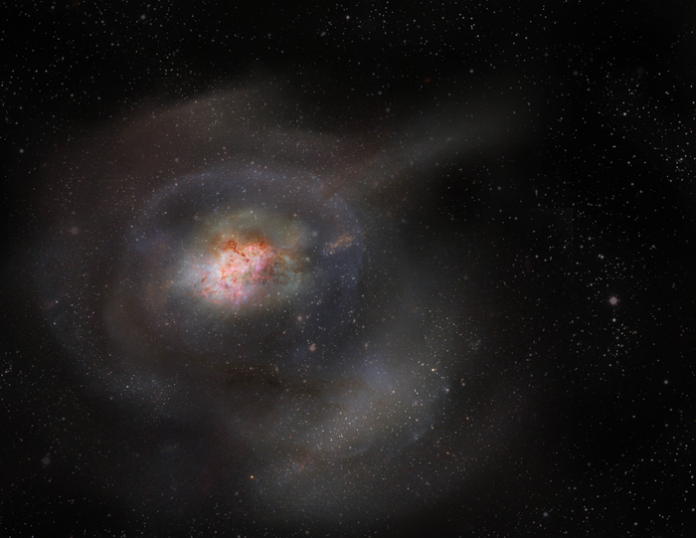Researchers discover rather than expelling it, post-starburst galaxies condense their gas – but the question is, why?
Scientists discovered that post-starburst galaxies condense their gas rather than expelling it, begging the question: what’s actually keeping them from forming stars?
Post-starburst galaxies have previously been thought to scatter all of their gas and dust in fast and violent bursts of energy, however new research reveals that not all of their star-forming fuel is expelled after all.
Data from the Atacama Large Millimeter/submillimeter Array (ALMA) has shown that these dormant galaxies hold onto and compress large amounts of highly-concentrated turbulent gas, however its been revealed they aren’t using it to form stars.
The continuing mystery of post-starburst galaxies
Scientists expect gas to be distributed in a way similar to starlight in most galaxies, but for post-starburst galaxies (PSBs) this isn’t the case. PSBs are different from other galaxies because they are born in the aftermath of mergers or violent collisions between galaxies.
Galaxy mergers typically trigger huge bursts of star formation, but in PSBs, this outburst slows down and near-completely stops almost as soon as it begins. As a result, scientists previously believed that little or no star-forming fuel was left in these galaxies’ central star-forming factories. Until now, the belief was that the molecular gases had been redistributed to radii well beyond the galaxies, either through stellar processes or by the effects of black holes. The new results challenge this theory.
“We’ve known for some time that large amounts of molecular gas remains in the vicinity of PSBs but haven’t been able to say where, which in turn, has prevented us from understanding why these galaxies stopped forming stars. Now, we have discovered a considerable amount of remaining gas within the galaxies and that remaining gas is very compact,” said Adam Smercina, an astronomer at the University of Washington and the principal investigator of the study. “While this compact gas should be forming stars efficiently, it isn’t. In fact, it is less than 10-percent as efficient as similarly compact gas is expected to be.”
Scientists have even more questions about where turbulent energy is coming from
In addition to being compact enough to make stars, the gas in the observed dormant—or quiescent—galaxies had more questions for scientists.
“The rates of star formation in the PSBs we observed are much lower than in other galaxies, even though there appears to be plenty of fuel to sustain the process,” said Smercina.
“In this case, star formation may be suppressed due to turbulence in the gas, much like a strong wind can suppress a fire. However, star formation can also be enhanced by turbulence, just like wind can fan flames, so understanding what is generating this turbulent energy, and how exactly it is contributing to dormancy, is a remaining question of this work.”
Decker French, an astronomer at the University of Illinois, and a co-author of the research said: “These results raise the question of what energy sources are present in these galaxies to drive turbulence and prevent the gas from forming new stars. One possibility is energy from the accretion disk of the central supermassive black holes in these galaxies.”

Observation means Milky Way Galaxy and Andromeda Galaxy could merge, billions of years later
The key to providing context to the Universe and our place in it is gaining a clear understanding of the processes that govern the formation of stars and galaxies. This discovery has given researchers one more clue to solving the mystery of how galaxies in particular live, evolve and die over the course of billions of years.
J.D. Smith, an astronomer at the University of Toledo, and a co-author of the research said: “There is much about the evolution of a typical galaxy we don’t understand, and the transition from their vibrant star-forming lives into quiescence is one of the least understood periods. Although post-starbursts were very common in the early Universe, today they are quite rare.
“This means the nearest examples are still hundreds of millions of light-years away, but these events foreshadow the potential outcome of a collision, or merger, between the Milky Way Galaxy and the Andromeda Galaxy several billion years from now. Only with the incredible resolving power of ALMA could we peer deep into the molecular reservoirs left behind ‘after the fall.’”
Smercina further said: “It’s often the case that we as astronomers intuit the answers to our own questions ahead of observations, but this time, we learned something completely unexpected about the Universe.”
The results of the study are published in The Astrophysical Journal.











